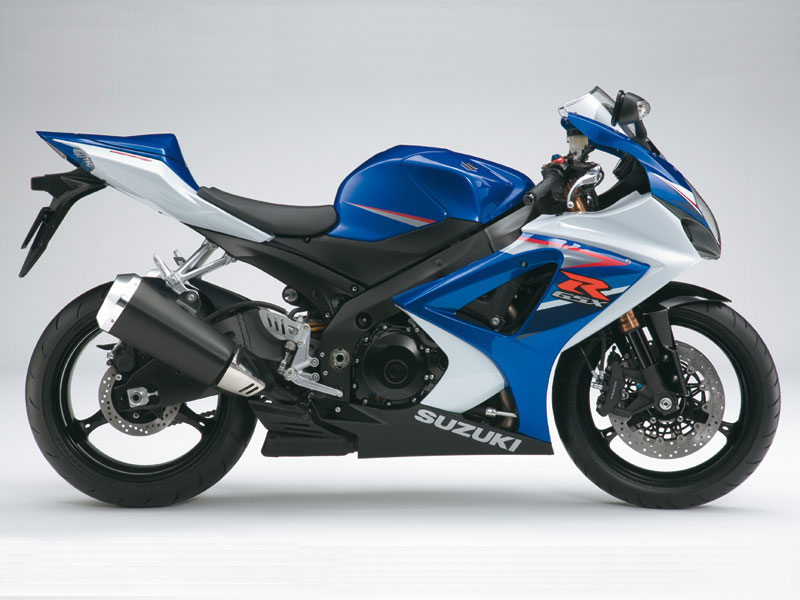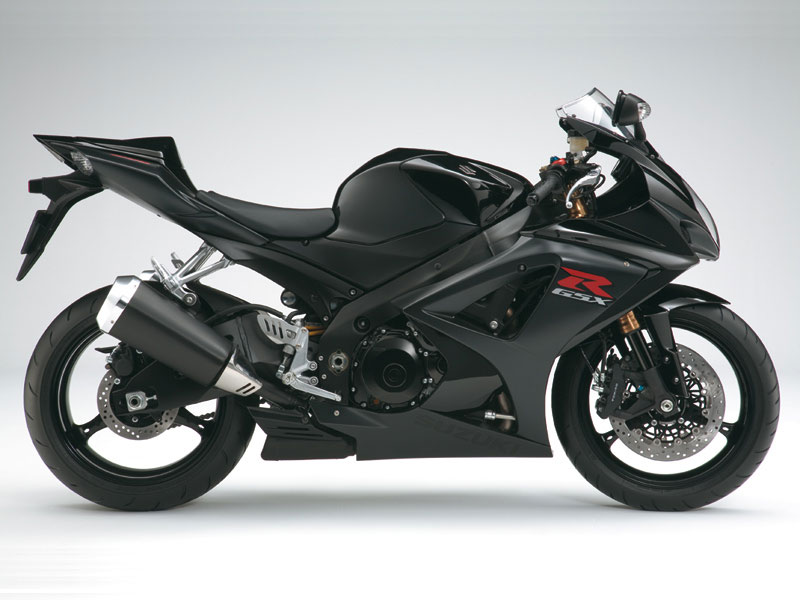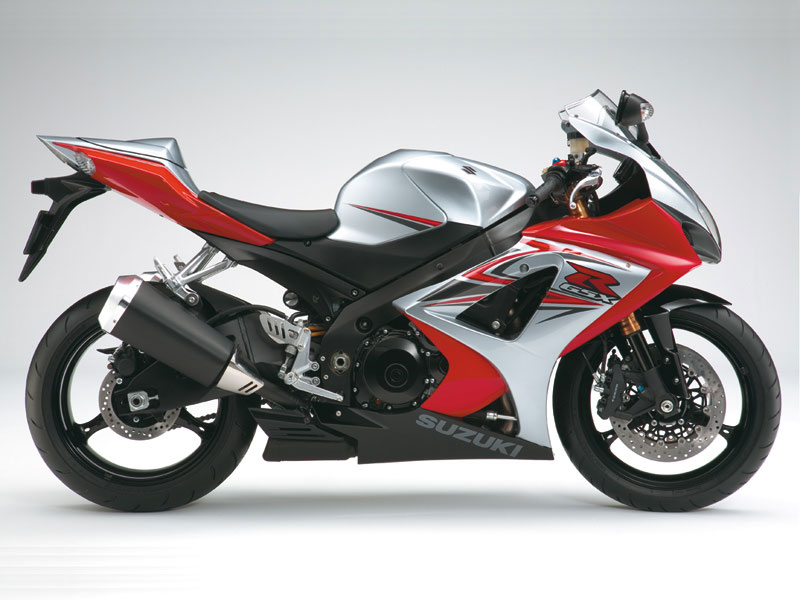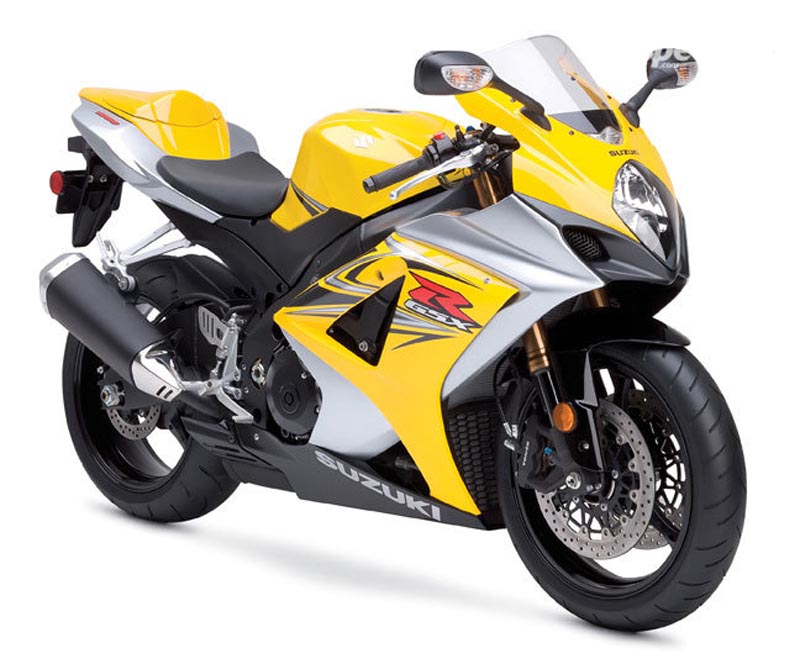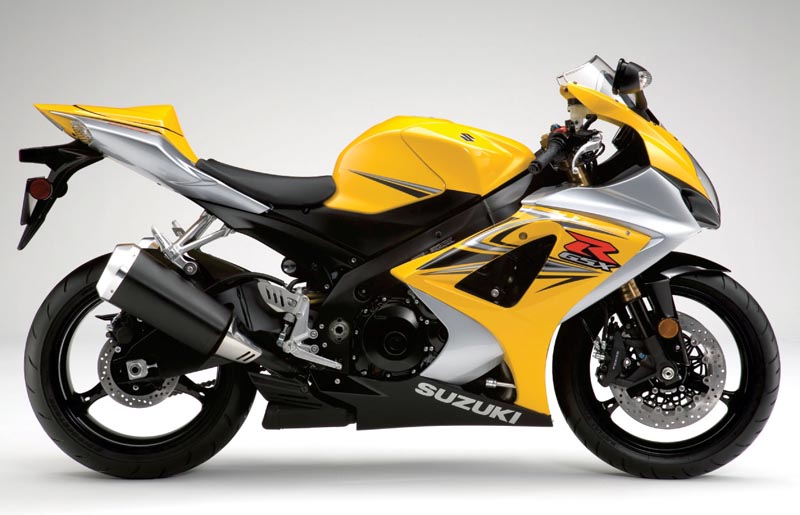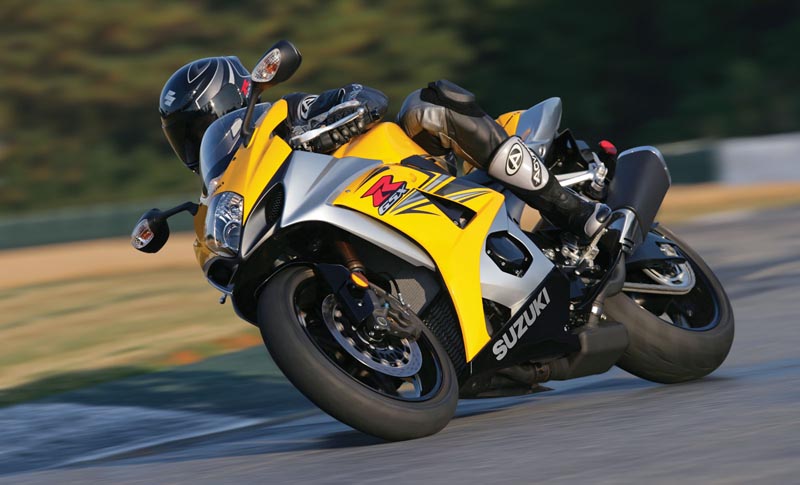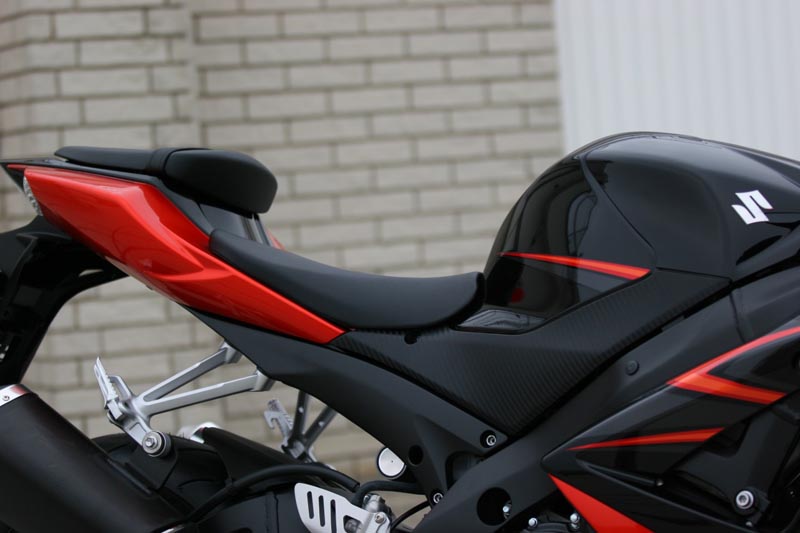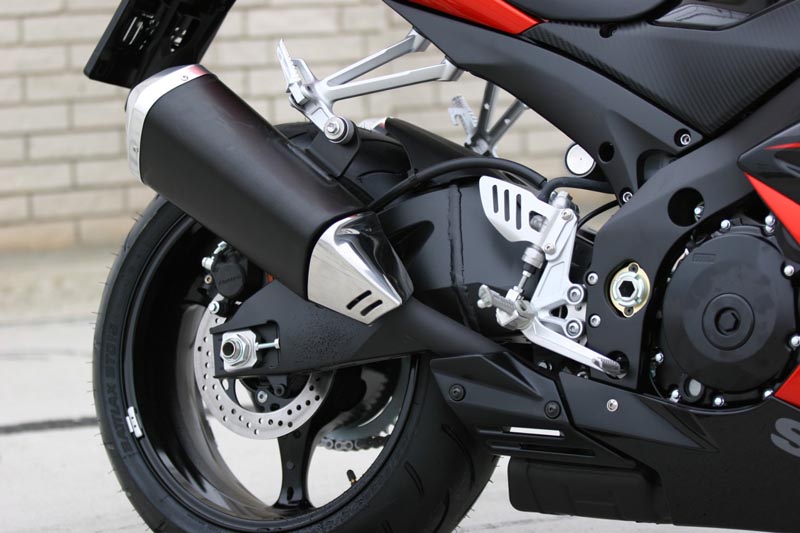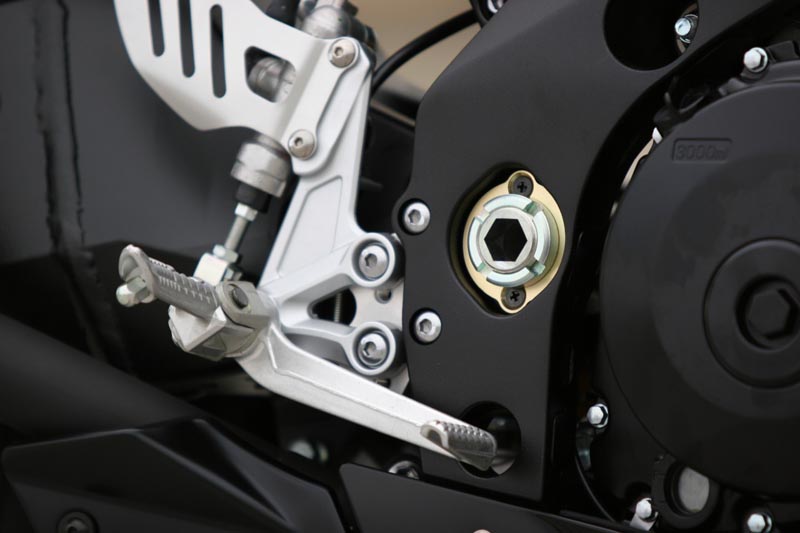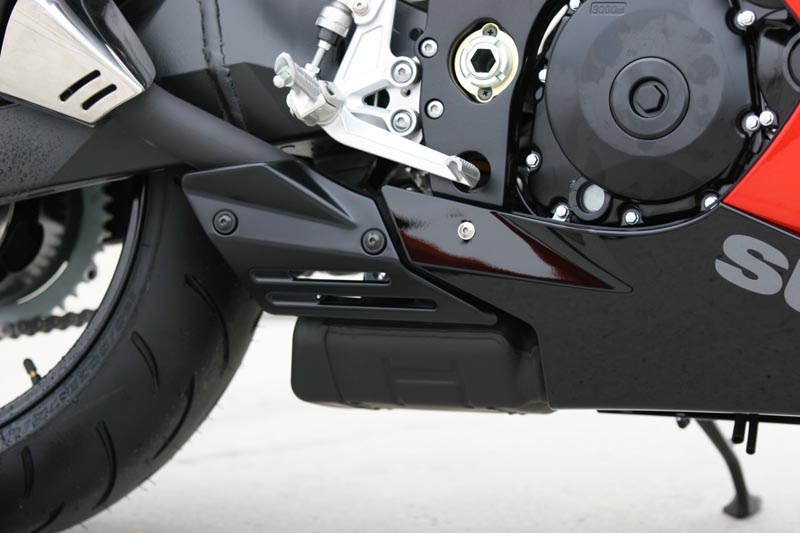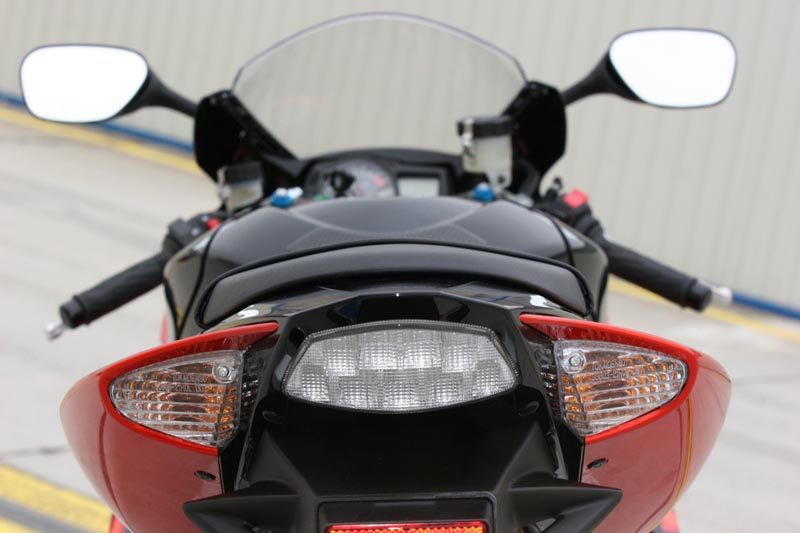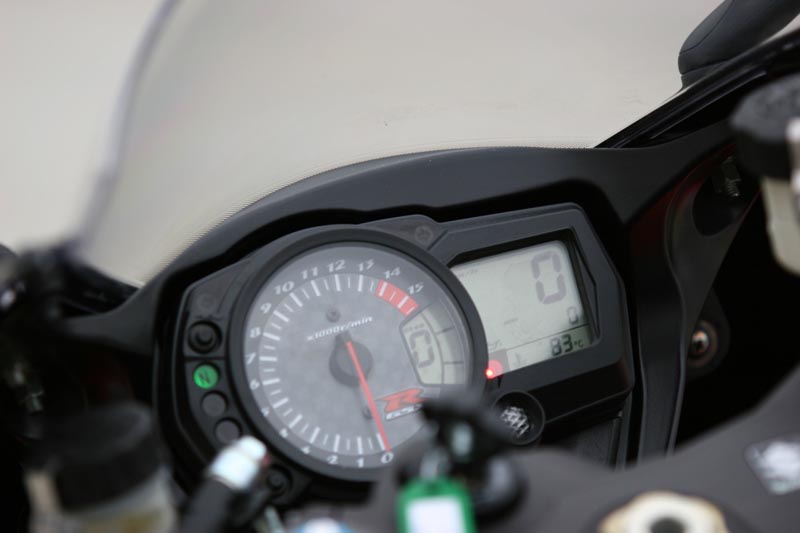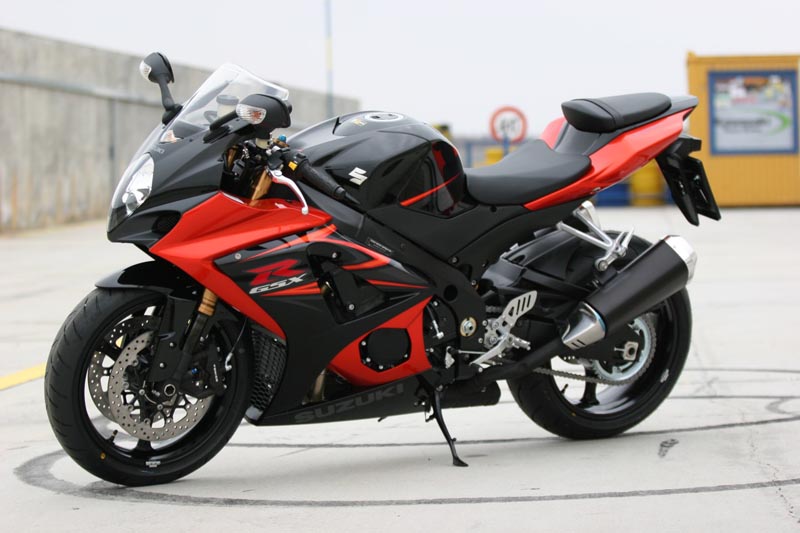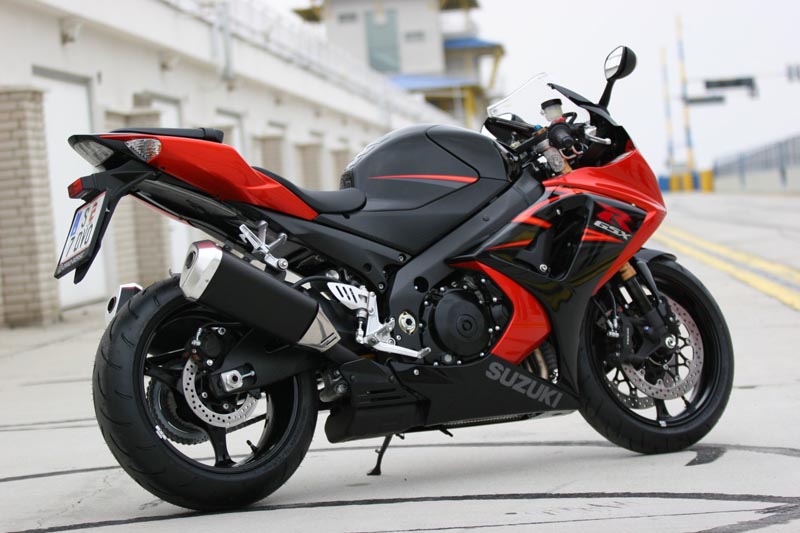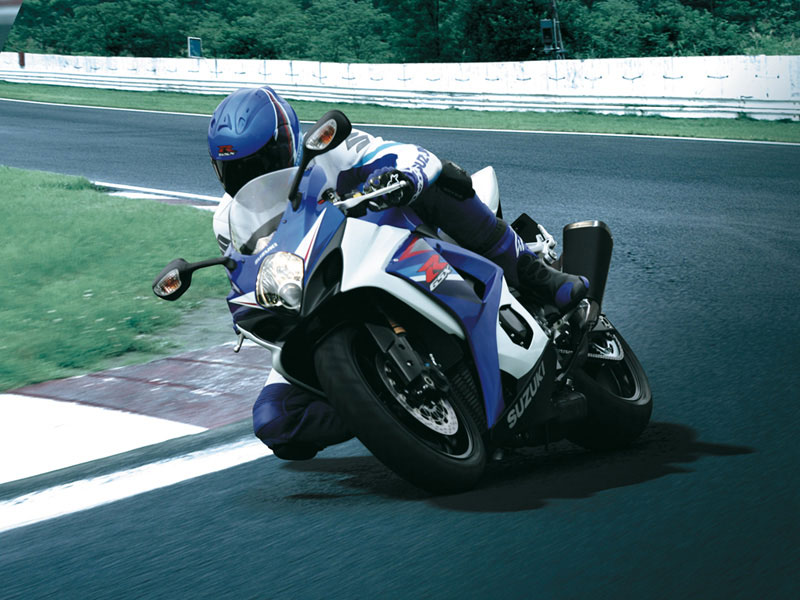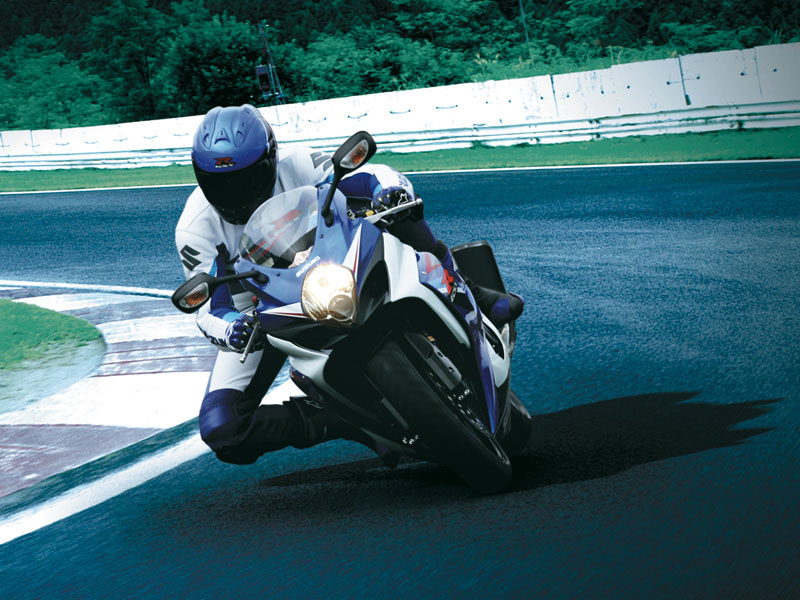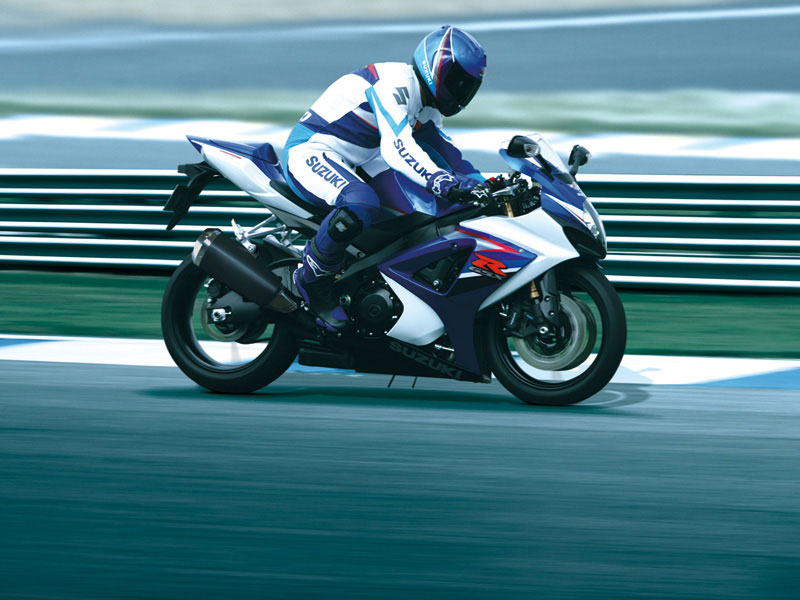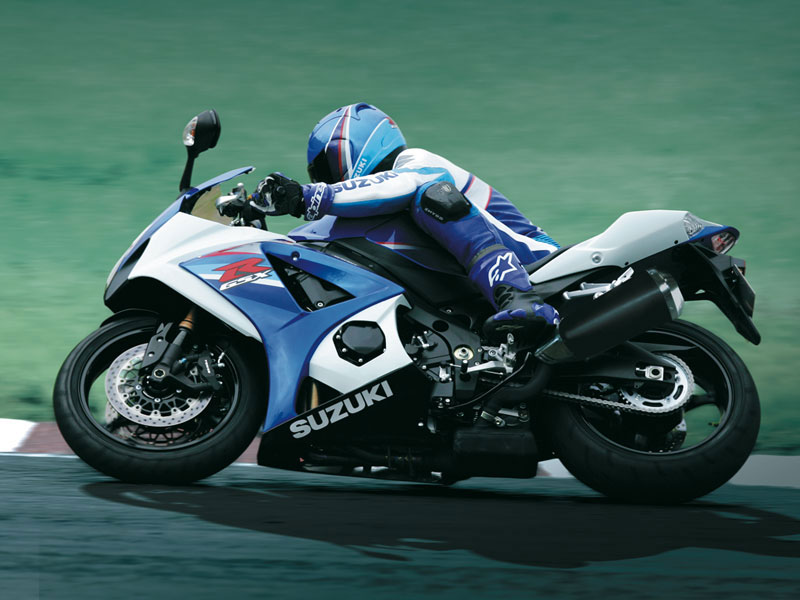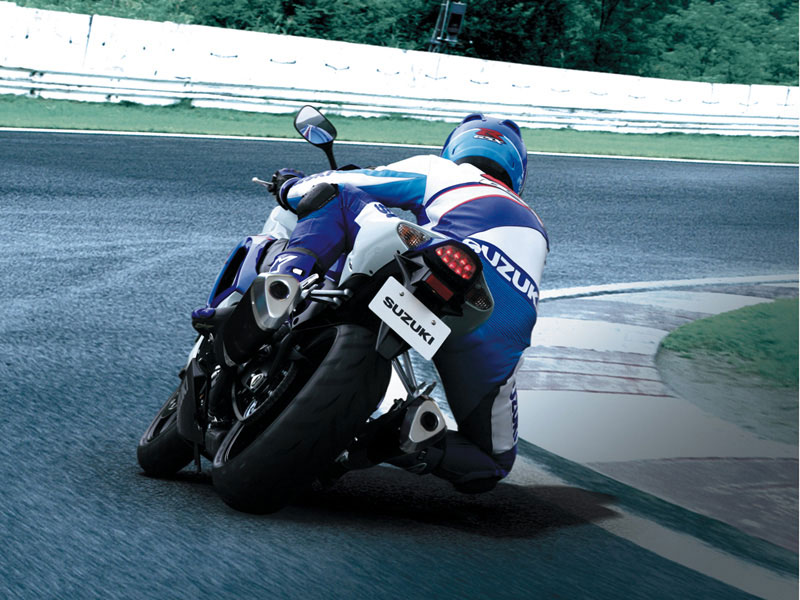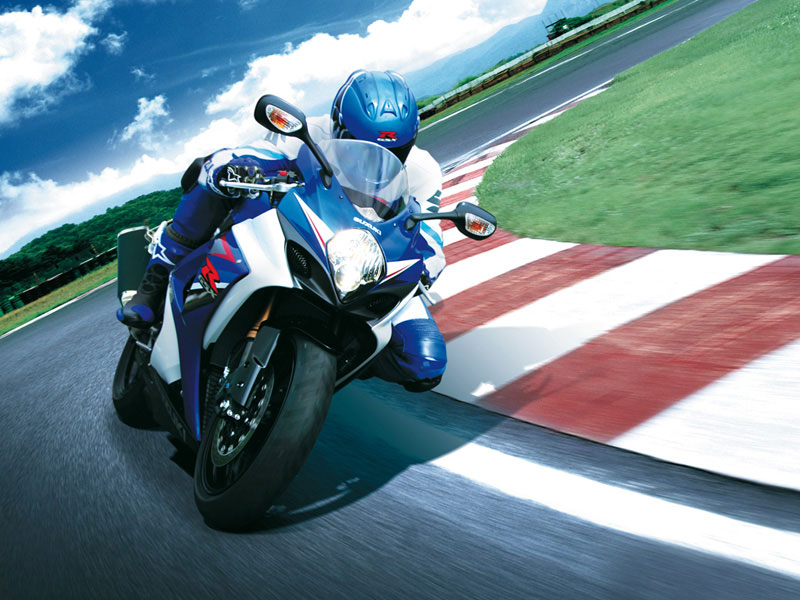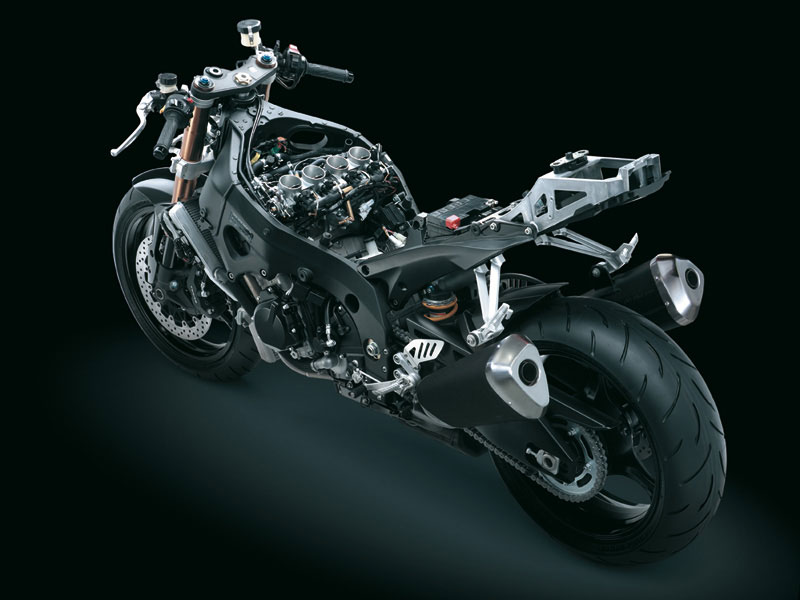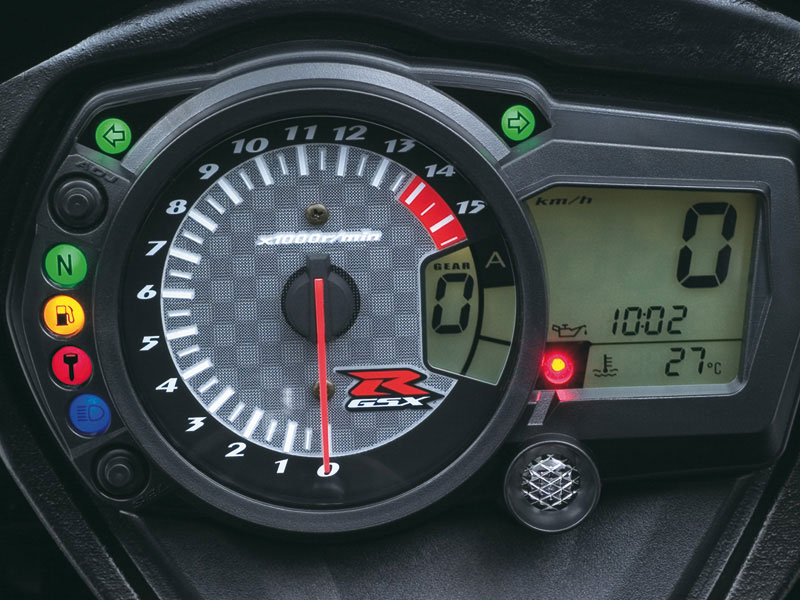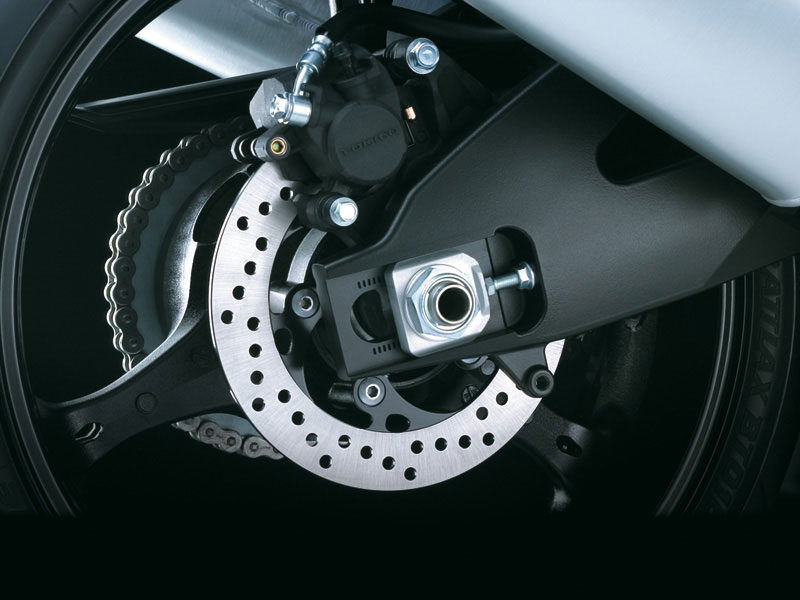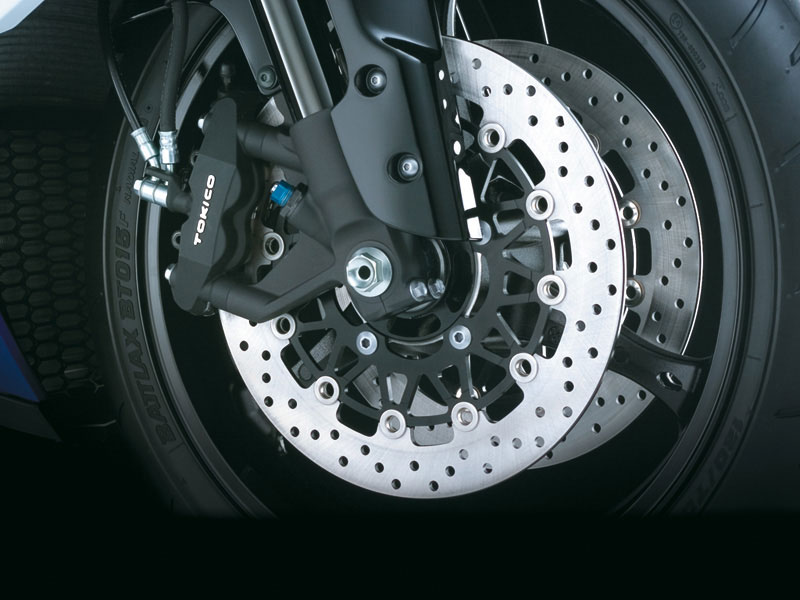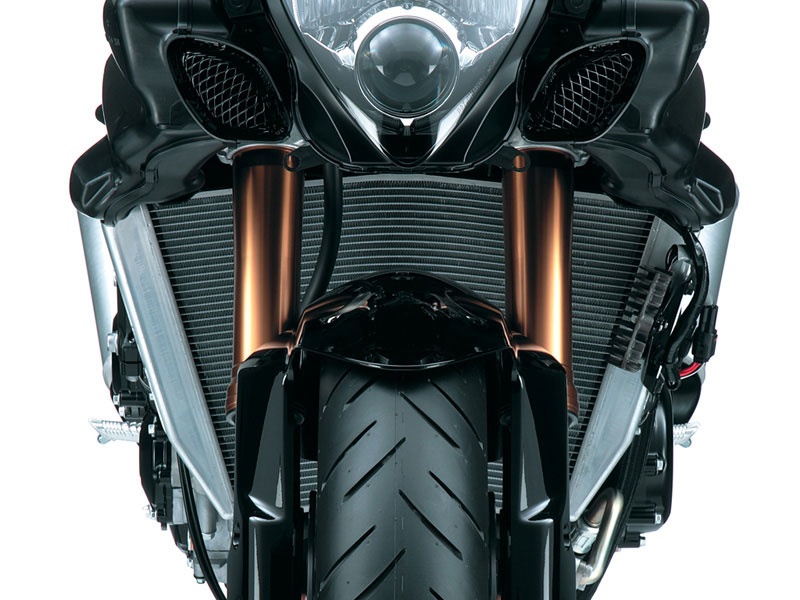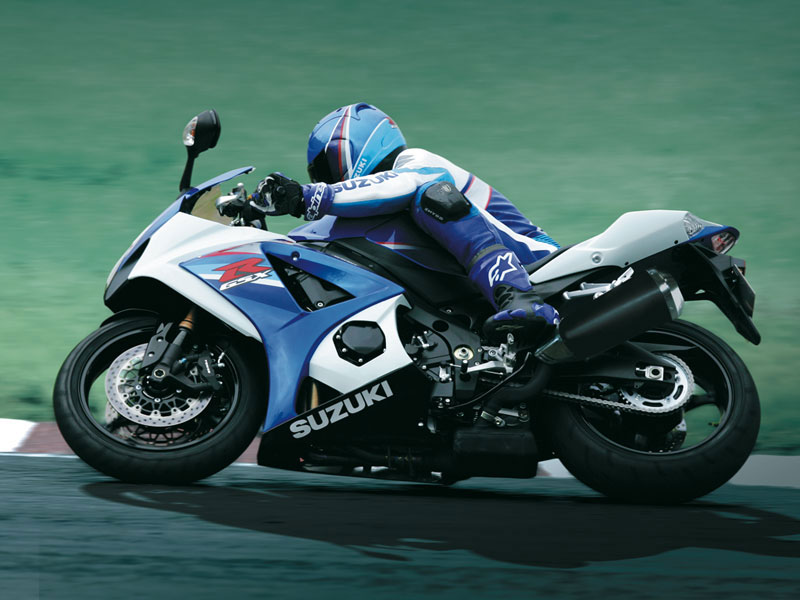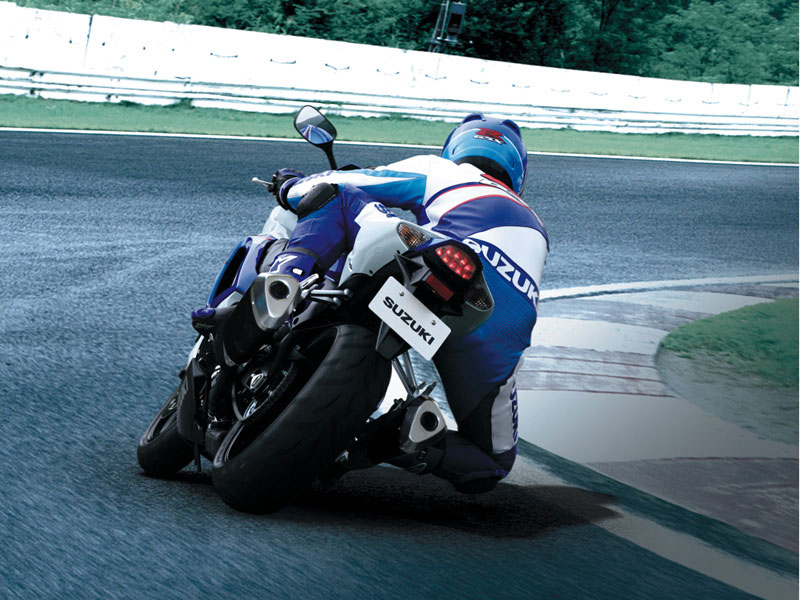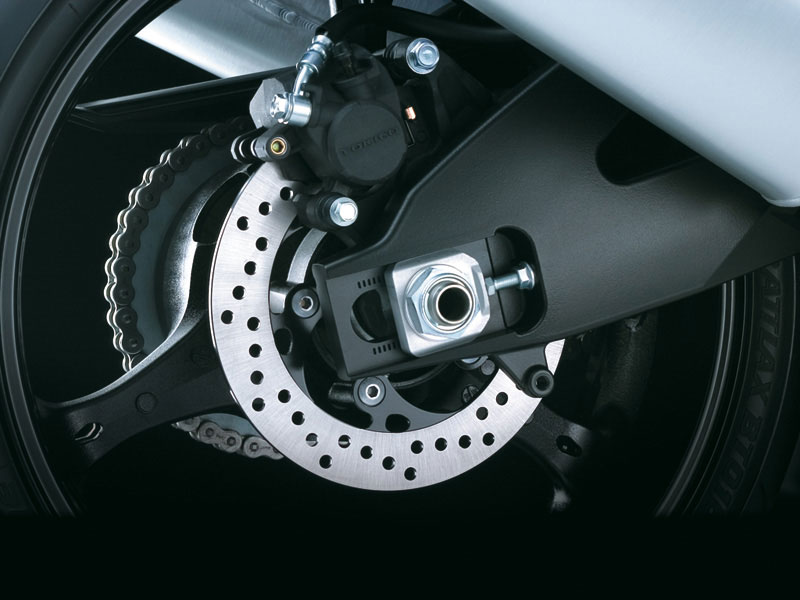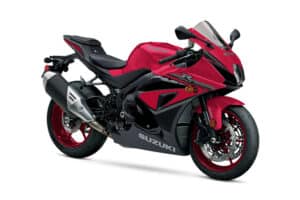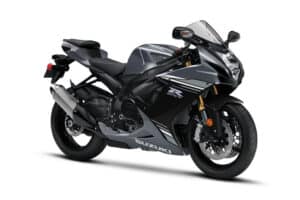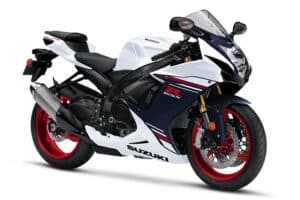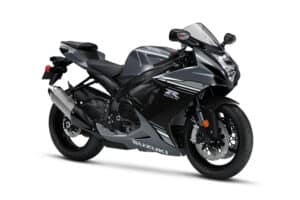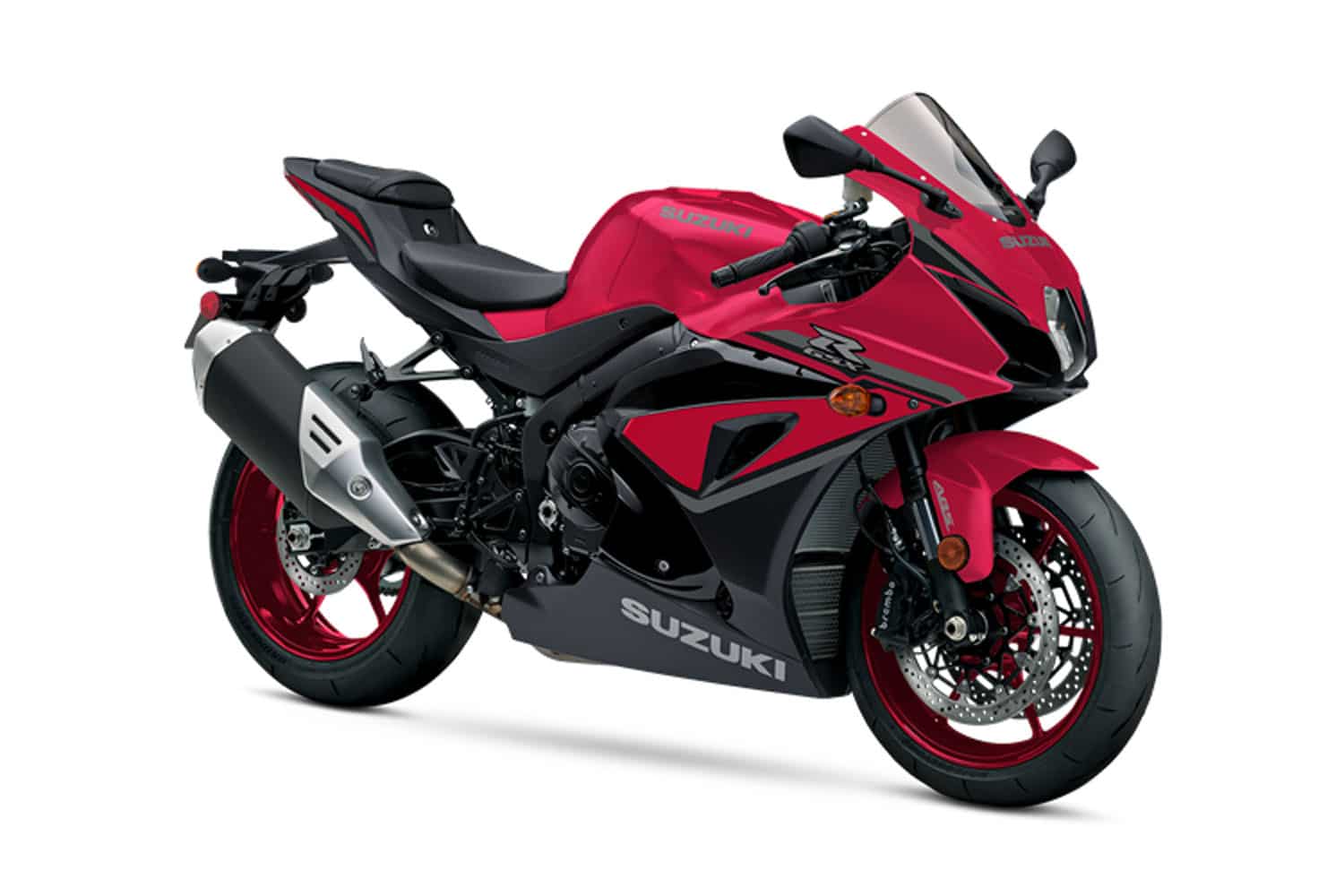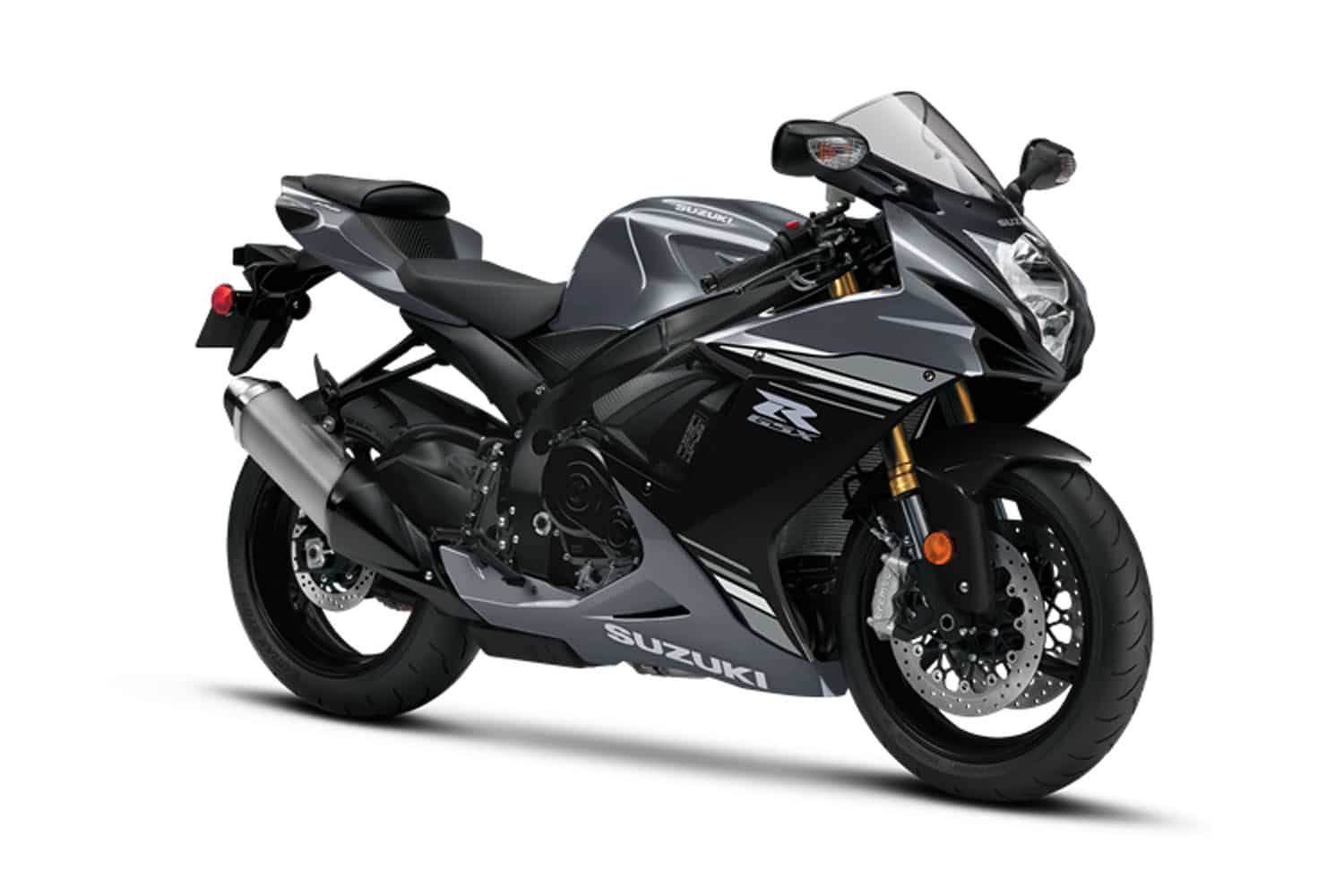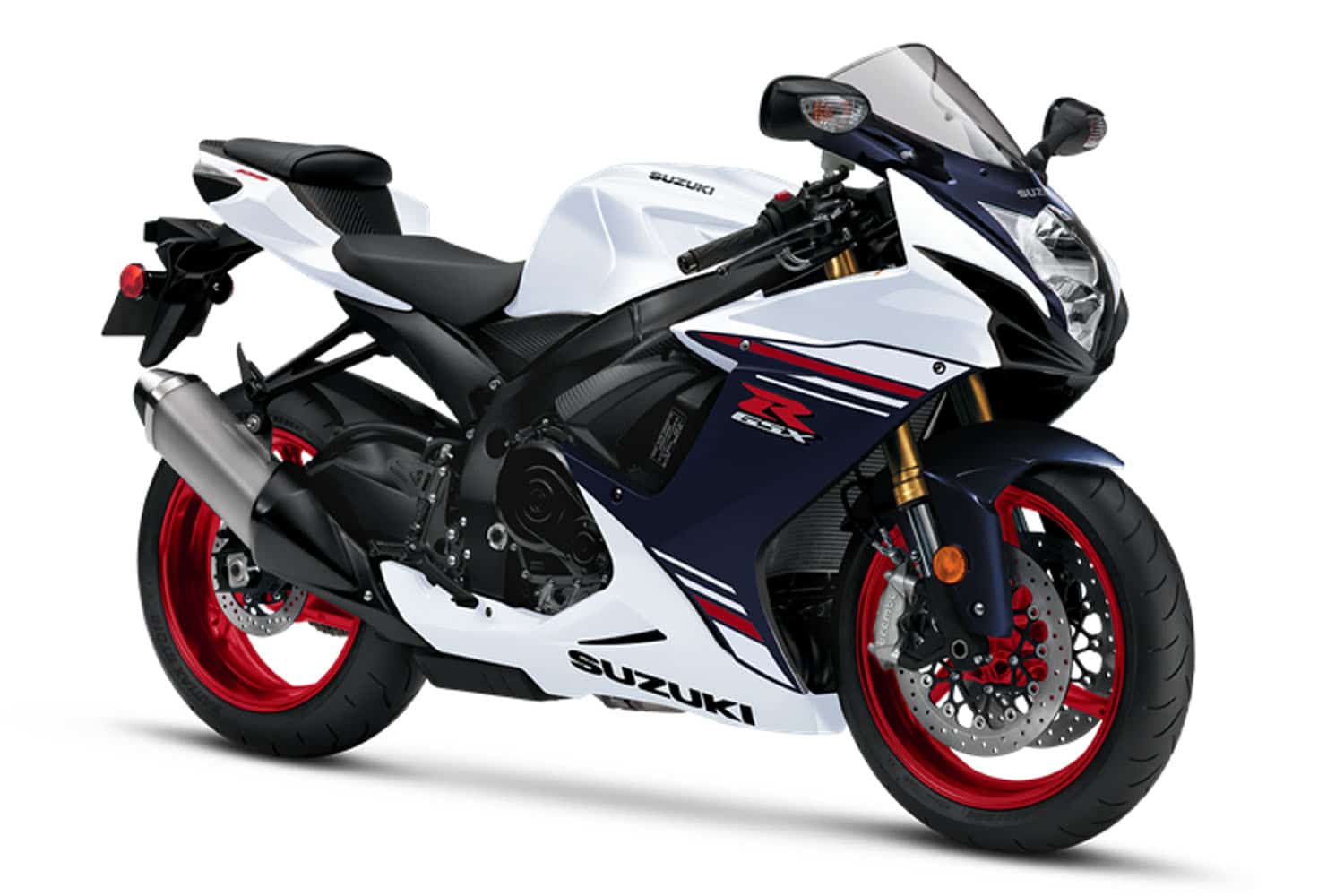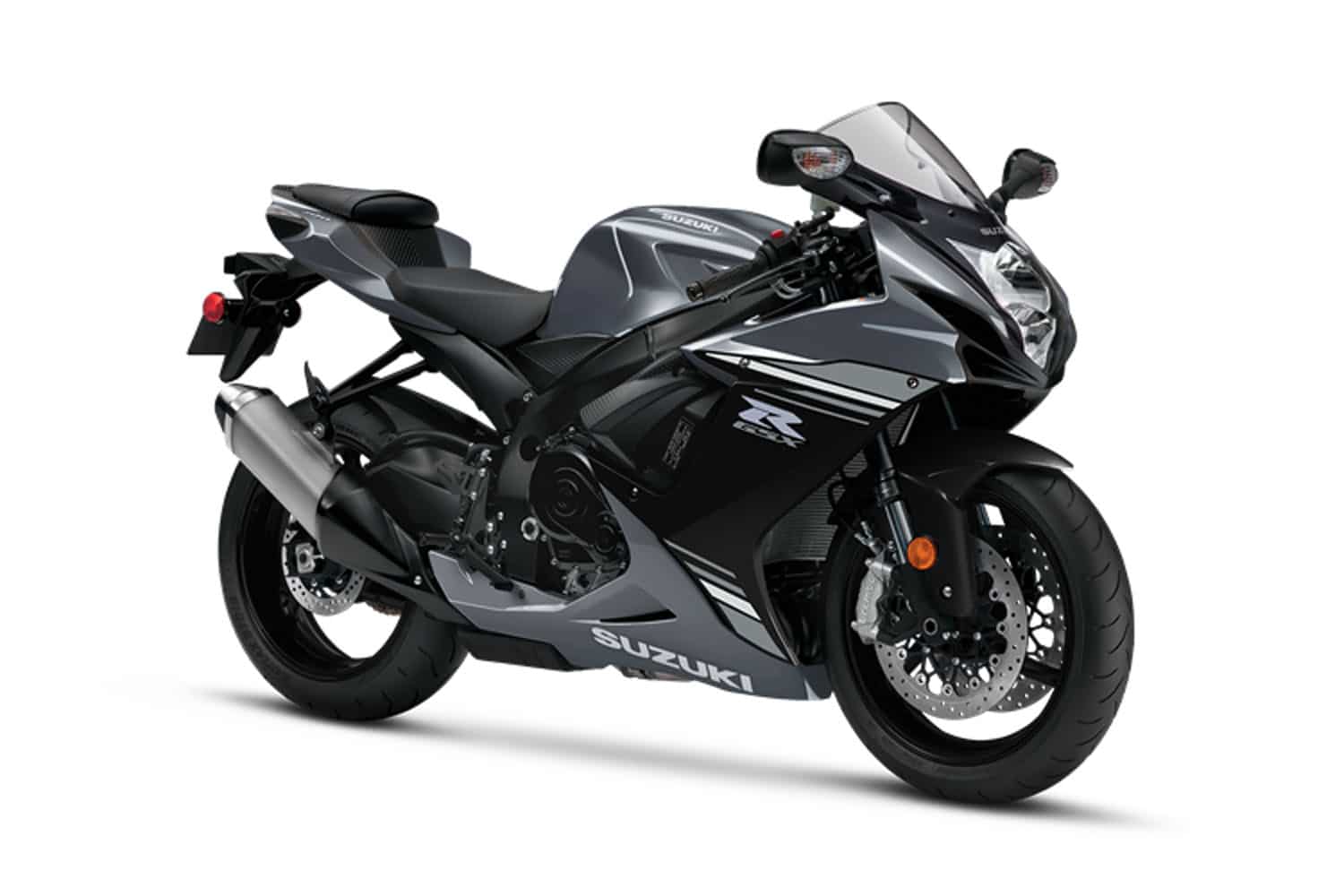For the engineering team responsible for the Suzuki GSX-R1000 2007, Control circuitry is not a slogan more, it’s a lifestyle. A life dedicated to manufacturing the most successful motorbike Open class in the history of motorcycle racing series based. Applying the latest technology and the most recent experiences in competition.
And keeping the Suzuki GSX-R1000 2007 always out of reach of his rivals. The key lies in the ability of this motorcycle to respond accurately to the demands of the pilot, when he wants and how he wants. Accelerate. Curbing. Rotate. Again and again.
Make it easier for the pilot with subsequent life outcomes. With best lap times on the track and more fun out of it. They call it High Performance. And this has gotten the Suzuki GSX-R1000 2007. And for this reason, Suzuki riders dominate on the track.
More Efficiency = More Power
The combustion efficiency, burn every possible gram of gasoline in the combustion chamber, is the key to increased power, improved throttle response and reduced emissions. In a textbook example of how to apply the most advanced technology, Suzuki engineers have made the Suzuki GSX-R1000 2007 to develop more power while improving throttle response, meeting the strictest standards Euro 3 and Tier 2 out of emissions.
The Suzuki GSX-R1000 2007 Suzuki is simply the most powerful large displacement, more efficient and cleaner ever made.
The basic architecture of the compact engine of 999 cc liquid-cooled Suzuki GSX-R1000 2007 is well known, a model of the winning design in competition:
Bore and stroke of 73.4 mm x 59.0 mm four forged aluminum pistons with short skirts and side cuts, moving cylinders integrated into the crankcase and the treatment developed in competition nickel-phosphorus-silicon carbide called Suzuki Composite Electrochemical Material (SCEM). Cranks blasted steel chrome moly. Two hollow camshafts, bucket tappets and four titanium valves per cylinder arranged in narrow angle. Shafts arranged vertically to reduce engine length. Gearbox six-speed close ratio limiter clutch with adjustable torque for smoother cuts. Forged steel crankshaft with balancing countershaft gear commanded to reduce vibrations at high spin. System of forced air inlet and Suzuki Ram Air Dual Throttle Valve (SDTV) digital direct injection of fuel, with two injectors and two butterfly valves in each throttle body, the first valve controlled by the throttle and the second by the engine management system to maintain the target speed of intake inlet (based on rpm, throttle position and gear engaged), while the second injector operates at high speed and high load conditions. The new injectors Suzuki GSX-R 1000 2007 are more compact and feature 12 small holes instead of 4 great as before, producing a finer fuel spray. As a result, the primary nozzles may be positioned more vertically with an angle of 30 in the inlet, thereby contributing to improve the feel of the accelerator.
The intake and exhaust are now wider, 10% of admissions and 20% of exhaust, an improvement developed in Superbike racing. The covers are wider exhaust 2mm (26 mm instead of 24 mm) to work with trees more aggressive cams. Spark plugs have finer iridium electrodes, producing a wider spark for better combustion, with a longer lifetime conventional spark plugs.
A new ISC (Idle Speed Control) system automatically adjusts the volume of fresh air that feeds the idle circuits injectors, improving cold starting and stabilizes engine idle under the most diverse conditions.
The latest high-volume exhaust stainless steel and titanium SAES (Suzuki Advanced Exhaust System) Suzuki GSX-R1000 2007 consists of four manifolds of equal length, a short middle section and a single chamber under the engine resulting in two short titanium mufflers, one on each side of the bike. The incorporation of a single camera under the engine and the use of two short silencers, instead of a larger, almost twice the internal volume of exhaust while the center of gravity low, centralizing mass and improving the aerodynamics.
The central exhaust incorporates an exhaust throttle (SET) by a butterfly valve actuator to adapt the exhaust back pressure to engine speed, the throttle position and gear selection, maximizing torque to throughout the rev range and in varied conditions.
The Suzuki Pulsed Air system (PAIR) injects fresh air from the airbox into the exhaust ducts, reducing emissions from burning unburned hydrocarbons and carbon monoxide. The PAIR system is controlled by the engine management system based on engine speed and throttle opening.
Exhaust System Controller (SET)
This middle section also incorporates an oxygen sensor, which the engine management system uses to tune the amount of fuel injected into the cylinders. Also the camera beneath the engine contains a catalyst, reducing emissions of HC, CO and NO to meet Euro 3 and Tier 2 regulations.
The vents located between the cylinder walls below the piston stroke are now wider, 48 mm instead of 39 mm, allowing the air trapped underneath each descending piston out more quickly when they get the pistons . This crankcase ventilation system helps to maintain the pressure waves in the sump reaching the airbox. Both changes reduce the pressure inside the engine and mechanical losses.
A new self-adjusting hydraulic clutch system minimizes the change of tact of it in long races.
Adjustable Engine Management, three levels of performance
The engine management system of the Suzuki GSX-R1000 2007 enjoys a huge computer power, with a ECM four times more capacity than that used in the previous model.
This computer not only controls the injection and exhaust systems, responsible for the high efficiency of the engine of the Suzuki GSX-R1000 2007, but also allows the rider to choose from three levels of benefits to suit riding conditions, using a three-position switch on the right handlebar.
The ignition map varies in each level and has been developed through racing experience racing in the wet, intermediate and dry, allowing the pilot to select a different map for each of the circuit, very handy when the rain makes an presence only in some curves.
This system also allows the driver to select a different map to suit different conditions in a long career, for example when the tires start to lose grip or also choose a map for fast circuits and one for the more twisty.
Enhanced Cooling
The new larger radiator Suzuki GSX-R1000 2007 has the same typical trapezoidal shape of the Suzuki GSX-R1000 official racing, with almost 10% more cooling capacity. The oil pump is more powerful, increasing flow through a more efficient oil radiator.
A Totally New Party Time With more adjustable suspension The latest Suzuki GSX-R1000 2007 enjoys a result of recent experience in racing chassis, including the maximum mass centralization.
Designed for maximum balance between rigidity and precise touch, even at full tilt, the new chassis has been built using only five major pieces of cast aluminum, including a transverse hollow steering column, two rafters / support braces swingarm and above and below the swingarm. The subframe of the Suzuki GSX-R1000 2007 consists of two profiles screwed into aluminum alloy and supports the seat and tail. The reduction in number of parts and welds also optimizes precision in assembly.
The new, stiffer swingarm is made using three pieces of cast aluminum and is 200 gr. lighter. The new shock absorber mounting system uses a piece aluminum alloy swingarm pivots on it with forged aluminum rods connected to the chassis. This new scheme increases traction in curly pavement while responding more smoothly in the larger bumps.
Moving up the progressive system has left room for the exhaust chamber, thereby contributing to mass centralization. An optional racing kit includes a removable inserts that allow increase or decrease the swingarm in increments of 2 mm, allowing mechanical adjust the angle of tilt to suit the different requirements of each circuit.
The new compression setting high and low speed is available in both front fork and rear shock, another inherited trait of racing. The extension of hydraulic and spring preload are also fully adjustable.
The fork legs are now under the larger diameter lower stem to increase stiffness, from 54 mm to 56 mm, while the DLC-treated bars remain 43mm. Progress has varied from 30 mm to 28 mm. The wheel travel has increased from 120 mm to 125 mm.
Steering Damper electronically controlled
The new electronic steering damper control offers the best of both worlds, with less force at low speeds for lighter and stronger at high speed direction. A solenoid valve operated by the engine management system moves a tapered needle in a reducing or increasing oil flow to change the level of damping seat.
Footrests and adjustable controls
The Suzuki GSX-R1000 2007 enjoys adjustable footrests at three positions in the horizontal and vertical range of 14 mm. The rear brake pedal and pump on the right and the shift lever on the left move equally with their footrests.
Effective Brakes
The Suzuki GSX-R1000 2007 now features new discs and their supports, each 310 mm in diameter, anchored to its support by a redesigned floating system. Anchors as many disk allows better heat dissipation disk, having a thickness of 5.5 mm.
The front discs continue to work with radial-mount calipers and four-piston radial pump for better touch. The 220 mm rear disc is bitten by a single piston caliper mounted above the swingarm now.
Body Aerodynamics and new front optics
The work in the wind tunnel has resulted in a new body for the Suzuki GSX-R1000 2007, with an aggressive style and less frontal area for amazing aerodynamic performance. A slightly higher dome provides the driver circuit coupled behind her.
The double front optics vertical configuration features a new design that makes good the saying races that simpler is better, with a more compact projector beam. Low Light incorporates multi-reflector halogen bulb type H7 55W and is located above the long light, 65 W. Both H9 bulbs light up at once when the high beam is selected.
The seat and side covers are narrower, to facilitate the movements of the rider above the Suzuki GSX-R1000 2007 cornering and easier to get down in the arrests.
Improved Instrumentation
The dashboard includes a servo motor controlled analog tachometer, digital speedometer, dual trip meter, digital clock, digital engine temperature warning abnormality injection, digital display of speed and an LED programmable warning system of rotation. The instrumentation also includes a digital map on selected by the pilot.
Maximum Performance
The new Suzuki GSX-R1000 2007 has been created from the lessons learned in over 20 years of dominance in motorcycle racing series. It is more than a motorcycle, is the most powerful and efficient Suzuki GSX-R1000 ever made. Designed not only to provide maximum performance in circuits around the world, but also to offer maximum performance your life. Whether you participate in official races, in batches in circuit or just an exciting Sunday outing with friends.
Suzuki GSX-R1000 2007 Specifications
Colors
Pearl Vigor Blue / Glass Splash White (CWH)
Solid Black / Metallic Mat Black No.2 (CRU)
Marble Erakis Red / Metallic Mistic Silver (EDR)
Marble Daytona Yellow / Metallic Mistic Silver (EDS)
Candy Max Orange / Solid Black (ECE)
Dimensions and curb weight
Overall length: 2,045 mm (80.5 in)
Overall width: 720 mm (28.3 in)
Overall height: 1,130 mm (44.5 in)
Wheelbase: 1,415 mm (55.7 in)
Ground clearance: 130 mm (5.1 in)
Seat height: 810 mm (31.9 in)
Weight: 173Kg (381 lbs)
Engine
Engine Type: 4 stroke, liquid cooled, DOHC.
Number of cylinders: 4.
Bore: 73.4 mm (2.900 in)
Stroke: 59.0 mm (2.323 in)
Displacement: 999 cm 3 (61.0 cu In.)
Compression ratio: 12.5: 1.
Fuel System: Fuel delivery method.
Air filter: Paper element.
Starter system: Electric.
Lubrication system: Wet collector.
Idle speed: 1150 ± 100 r / min
Drivetrain
Clutch: Wet, multiplate oil.
Transmission: 6-speed constant mesh.
Gearshift pattern: 1 reduction, 5 increase.
Primary reduction ratio: 1.553 (73/47)
Gear Ratio:
First: 2,562 (41/16)
2nd: 2,052 (39/19)
3rd: 1,714 (36/21)
4th: 1,500 (36/24)
5th: 1.360 (34/25)
High: 1,269 (33/26)
Final reduction ratio: 2.529 (43/17)
Drive chain: DID530VA9, 112 links.
Chassis
Front suspension: Inverted telescopic, hydraulic, damping adjustable for preload, compression high and low speed and extent.
Rear Suspension: Fork links, hydraulic shock absorber adjustable in preload, compression high and low speed and extension.
Carrera Front fork: 125 mm (4.9 in)
Rear wheel travel: 135 mm (5.3 in)
Steering angle: 23º 45‘
Tilt the front axle: 27 (right and left)
Filmed: 98.4 mm (3.87 in)
Turning radius: 3.4 m (11.2 ft)
Front brakes: Double disc brake 310 mm, radial-mount 4-piston Nissin caliper
Rear brake: Disc brake 220 mm, double piston caliper
Front wheel: 17 M / C x MT3.50, aluminum alloy
Rear wheel: 17 M / C x MT6,00, aluminum alloy
Front Tire: 120/70 ZR 17 M / C (58 W), tubeless.
Rear Tire: 190/50 ZR 17 M / C (73 W), tubeless.
Electrical Equipment
Ignition Type: Electronic ignition (Transistorized)
Ignition timing: 4th BTDC at 1150 r / min
Spark plug: NGK CR9EIA-9 or DENSO IU27D
Battery: 12 V 36.0 kC (10 Ah) / 10 HR
Generator: Three-phase AC generator
Main fuse: 30A Fuse: 15/15/10/10/10/10 A
Headlight: High beam 12 V 55 W (H7)
Low light: 12 V 65 W (H9)
Flashing light:12 V 21 W
Number plate light: 12 V 5 W
Brake / rear: LED
Light: 12 V 5 W x1
Speedometer light: LED
Neutral indicator light: LED
Indicator light beam: LED
Indicator light turn signal: LED
Indicator light fuel level: LED
Light oil pressure warning: LED
Capabilities
Fuel tank, including reserve: 16.5 l. (4.4 / 3.6 US / Imp gal)
Engine oil:
oil change: 3,000 ml (3.2 / 2.6 US / Imp qt)
with filter change: 3.300 ml (3.5 / 2.9 US / Imp qt)
Repair: 3.600 ml (3.8 / 3.2 US / Imp qt)
Refrigerant: 2,500 ml (2.6 / 2.2 US / Imp qt)

